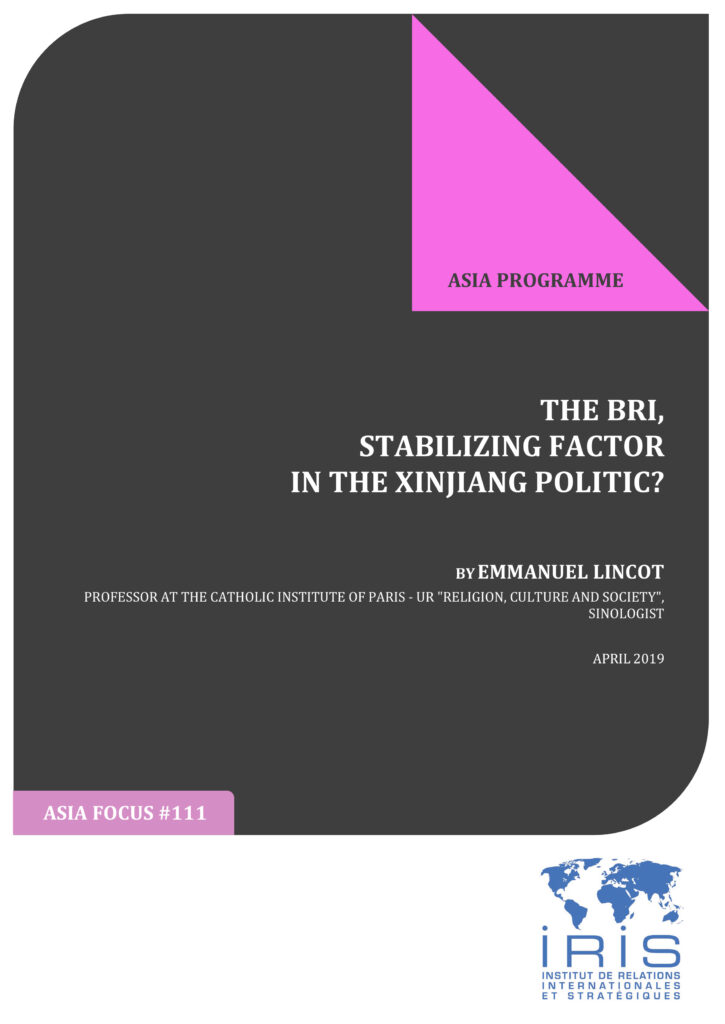Notes / Asia Focus
25 April 2019
The BRI, stabilizing factor in the Xinjiang politic?

During his speech at Astana (2013), which marked the official launch of the Belt and Road Project Initiative project (BRI), Xi Jinping engages in a true profession of faith. It is based on the trust that the Chinese economy will be conditioned by a project of internationally oriented investments in the domain of multibillion-dollar infrastructures; the success of this project is depending not only of the solvency of the borrowing countries but also of the securing of Muslim regions facing a strong instability. To face these challenges, the sustainability of the relations between the centre (China) and its periphery (Central Asia) is a priority. In this, Central Asia is also a laboratory for Chinese diplomacy and economy. China’s growing imports in terms of hydrocarbon (which it will certainly one day, counterbalance by its richness in the domain of rare earth) have engaged its leaders in a cooperation direction reinforced with this part of the world and more particularly with the neighbour Pakistani to connect the port area of Gwadar to the Kashgar oasis in Xinjiang. This northwestern province is, therefore, deeply upset. When it took three days during the past century to connect Beijing to the Kazakhstan border by train, today a few hours are enough. Strategic glaze, a pool of resources, Central Asia offers a depth of field that China has rediscovered thanks to independence (1991) of these former-Soviet Republics. It’s also through Central Asia and in the put in valour of its territories that China collaborates with its Russian partner…

